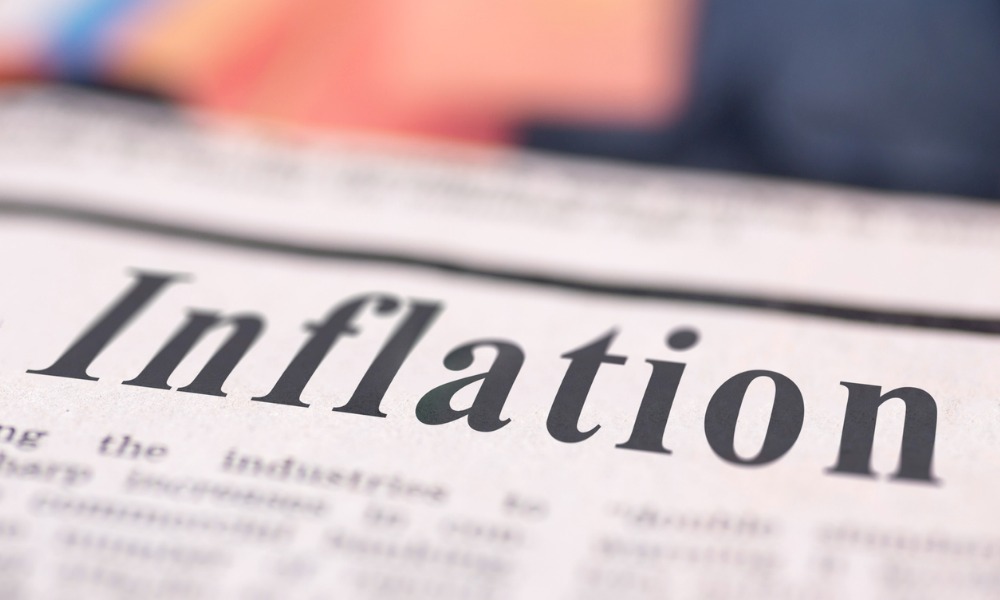Experts weigh in on the pros and cons pension plans can have in an inflated environment

While inflation rates remain elevated across all sectors of the economy, pension plan organizations can only wonder whether plan sponsors will be able to help retirees combat – or even beat – inflation.
There’s good news for those who are in public sector plans, says Dean Newell, vice president of Actuarial Solutions, Inc. “While public sector plans often have inflation protection, private sector plans’ inflation protection is not as common, so members of private sector pension plans might see that their pension value erodes with that inflation,” Newell says.
Another thing that’s currently trending among rising levels of inflation is the potential for higher investment returns, Newell says. “They're able to invest in fixed income securities, so safer securities get a higher investment return. With that higher investment return, comes an ability to lower their liabilities, especially if the thought is inflation will stay high, or the higher yields on government bonds will stay high.”
As for other issues affecting defined benefit plans, Newell says that in our current economy, for the first time in over 15 years, the funded status of plans has improved, including some plans which now have surplus. “There's an opportunity for plan sponsors to consider providing their retirees with ad hoc, sort of one-time adjustments, to potentially mitigate the impacts of inflation,” Newell said.
While he’s seen this historically where clients would try to provide their retirees with ad hoc indexing to keep their benefits consistent with inflation, Newell highlights that was more common in the 80s and 90s, and not used as much today. “We haven't seen that over a long period of time, generally because pension plans have not been as well funded over the last 20 years with the low interest rate environment but maybe that's something that plan sponsors might wish to consider now.”
Nevertheless, as all Canadians have CPP and OAS benefits, Newell added, those benefits are indexed to inflation, so all “Canadians can enjoy or benefit from some level of inflation protection on their retirement income.”
Pension plans don’t necessarily have an inflation problem, says Greg Hurst, managing director at Greg Hurst & Associates and DB consultant, but rather pension plan members are the ones who have inflation problems. “Because if it's a fixed pension and doesn't have a cost-of-living increases, the value of their pension in terms of its purchasing power is declining by inflation,” Herst said. “That's true for both defined benefit plan members and defined contribution plan members who are in receipt of a pension.”
What has driven part of the financial success that pension plans have experienced over the last 3-4 years, Newell points to higher interest rates and higher bond yields that reflect the higher inflation environment.
Newell also highlights that higher inflation has led to higher government bond yields. Higher government bond yields make pension plans less costly and arguably more affordable. With the cost of pensions down, the funded status is better and might provide more opportunity to improve benefits or to provide retiree indexing. “Higher interest rates, leading to higher expectations, going forward, allows plans to potentially have lower liabilities reflecting the higher expected investment return that they'll receive,” he said.
As to where inflation will impact pension plans in the next few years, Newell says “that’s the million-dollar question.”
“We have that final mile to go to get down into the 1 to 3 percent range, and ideally, the 2 percent target range. That might not be something that we see in summer of 2024. That might be something we see later in 2024 or 2025. I don't think we're going back to the 1980s anytime soon, where we're going to see it significantly higher for a lot longer. I have heard those arguments been made, that we could be in a new cycle, where investment returns and inflation is going to be higher. I would suspect that’s not the consensus … Who knows where we sit in two years’ time? Time will tell.”



